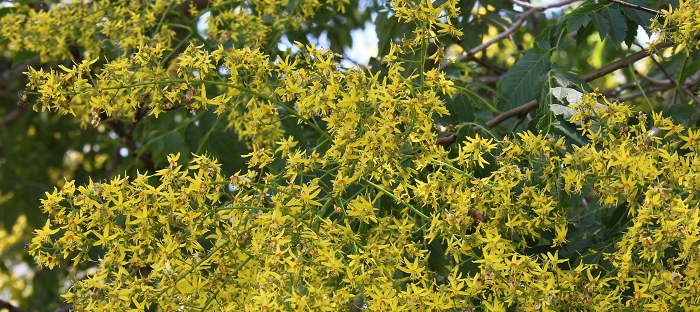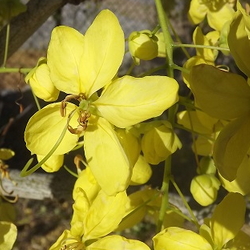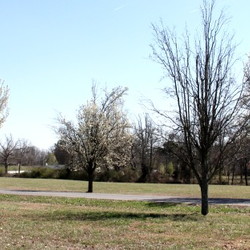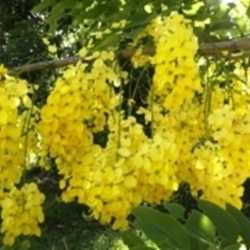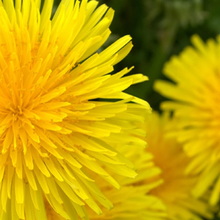Koelreuteria paniculata, commonly known as the golden rain tree is a double-edged sword. On one hand, it is a glorious landscape addition, sporting armloads of lemon yellow blossoms each summer that stop traffic. On the other hand, it is a short-lived tree that produces vast amounts of seeds that can turn into unwanted offspring in the right conditions. This is why it is always best to research any plant you intend to bring into your garden.
This Asian native was introduced to North America in 1763, so it was a familiar sight even before the Revolution. It tolerates a high range of conditions because it isn't terribly picky about soil and tolerates drought well once it is established. It likes a sunny spot, but will bloom with only 6 hours of direct sun each day. However, the best show is when the tree grows in moderately fertile ground in full sun.
It is a small to medium landscape tree, quickly growing to between 30 and 40 feet tall, so is a good choice for fast shade. Careful pruning while the tree is young is important. Train it to a single trunk and keep only the side branches that do not form a tight 'V'. The wood is strong, but brittle, so storm damage is a real possibility without proper care. That's a 'strike' in many gardener's opinions. It is also a short lived tree with a life-span of about 50 years, which is another 'strike'. This tough little tree doesn't mind heat and automobile exhaust, so that makes it a good candidate for a urban street tree, however, the falling blossoms, dried seed pods and the hard, round seeds also contribute to debris on the ground, so homeowners should site it away from driveways and walkways.
We have a spectacular specimen growing on the lawn of the 'court square' in our little town. It is well over 40 feet tall and it puts on a tremendous show every year. Yellow is such an unusual color for a flowering tree and this one is so massive, it literally stops traffic when it is in bloom. We are a cool Zone 7 or a warm Zone 6 and there doesn't seem to be a problem with unwanted seedlings, however in warmer climates they can be an invasive problem. We are at the northern edge of this tree's hardiness area of Zones 6 through 9. That is another reason to check before you plant. The golden rain tree is considered invasive in a number of areas due to the prolific seed production and bazillions of offspring. Give it another 'strike'. But there are quite a few reasons to plant one if this isn't a problem. Early spring leaves are an attractive pinkish color and the early summer blooms are breathtaking. The roots are not invasive to plumbing and sewers and very few pests seem to bother it, although deer will brows young trees if hungry. The thousands of lantern-shaped seed pods give the tree an unusual appearance through the end of summer and fall foliage is a stunning golden yellow. Bees adore the flowers, so this tree is beneficial to them and other pollinators.
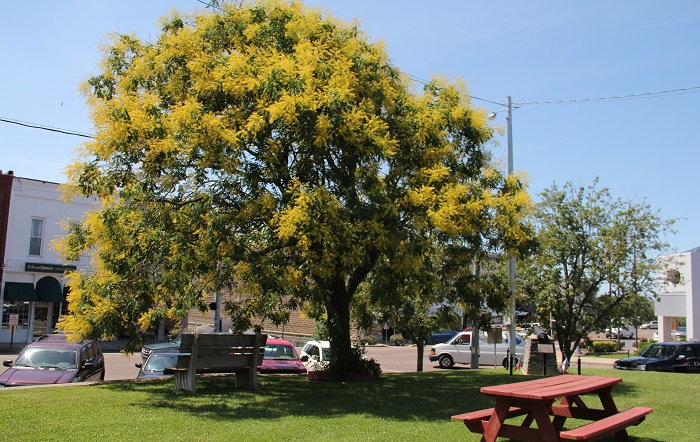
Koelreuteria paniculata has a couple of cousins that tend to be even weedier and more invasive, so if you purchase one, please do so from a reputable source to be sure of what you are buying. K. bipinnata and K. elegans are less cold-hardy, but produce many more seeds and their offspring can start a battle that can last for decades. They have the lovely floral show, but the price in headaches is not worth it.
The golden rain tree was part of the Asian natural pharmacy with a tea that was used as an eyewash for conjunctivitis. The young seeds were roasted and eaten and the young shoots and leaves were boiled and eaten as a potherb. This is good news for anyone dealing with unwanted seedlings, however, they must be boiled through a couple of changes of water to remove the traces of cyanide that they contain. Apparently this was considered a famine food and consumed when other options were unavailable. However, Asians held this tree in high regard and it was often planted over the graves of honored scholars.
Artists who love natural elements should note that the flowers produce a yellow natural dye and the leaves produce a black natural dye. The hard, round seeds are excellent beads for artists who make jewelry. The dried seed pods add texture and interest in floral arrangements as well.
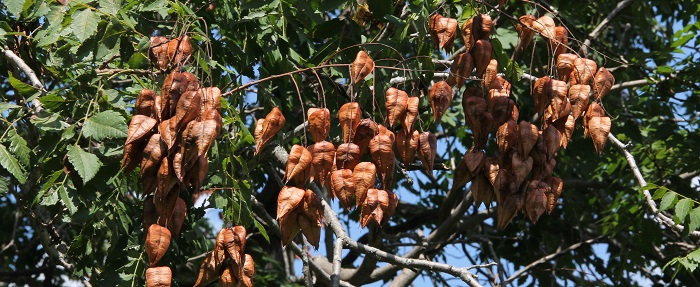
If your property meets the criteria for a peaceful friendship with the golden rain tree, it is best to plant it in the spring. Water well for the first season and be careful with mowers and weedeaters because the young bark is easy to injure. If you admire a tree in your neighborhood, perhaps the owner will allow you to take a cutting or two, since they are easy to root. Barring that, the seeds germinate well (too well sometimes) They do need stratification (a period of damp cold) to germinate. Just be aware of potential problems and do your homework before you plant. In the right conditions, the rain of golden blossoms falling from the tree each summer makes for a spectacular show.
